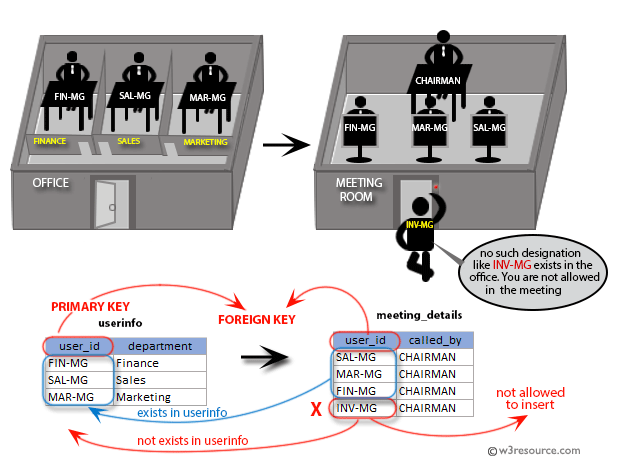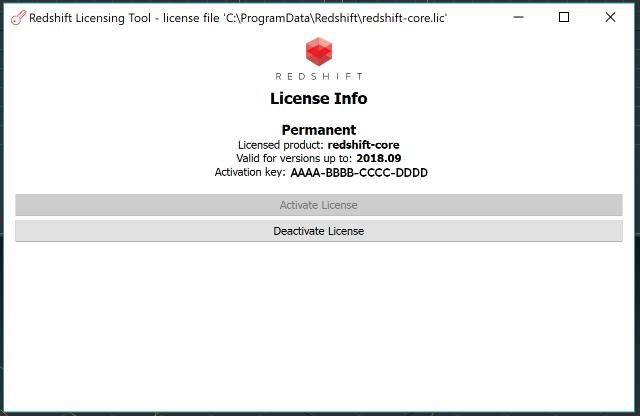

If a foreign key, list of the equality operators for PK = PK comparisonsĬonffeqop oid (references pg_operator.

If a foreign key, list of the equality operators for PK = FK comparisonsĬonppeqop oid (references pg_operator. If a foreign key, list of the referenced columnsĬonpfeqop oid (references pg_operator. If a table constraint (including foreign keys, but not constraint triggers), list of the constrained columnsĬonfkey int2 (references pg_attribute. It is a non-inheritable constraint.Ĭonkey int2 (references pg_attribute. This constraint is defined locally for the relation. A constraint with a nonzero number of ancestors cannot be dropped nor renamed. The number of direct inheritance ancestors this constraint has. Note that a constraint can be locally defined and inherited simultaneously.
#REDSHIFT FOREIGN KEY UPDATE#
If a foreign key, the referenced table else zeroįoreign key update action code: a = no action, r = restrict, c = cascade, n = set null, d = set defaultįoreign key deletion action code: a = no action, r = restrict, c = cascade, n = set null, d = set defaultįoreign key match type: f = full, p = partial, s = simple The corresponding constraint of the parent partitioned table, if this is a constraint on a partition else zero The index supporting this constraint, if it's a unique, primary key, foreign key, or exclusion constraint else zeroĬonparentid oid (references pg_constraint. The domain this constraint is on zero if not a domain constraint The table this constraint is on zero if not a table constraint Has the constraint been validated? Currently, can be false only for foreign keys and CHECK constraints The OID of the namespace that contains this constraintĬ = check constraint, f = foreign key constraint, p = primary key constraint, u = unique constraint, t = constraint trigger, x = exclusion constraint You can add the Redshift foreign key constraint by altering the table using the ALTER TABLE command.Constraint name (not necessarily unique!)Ĭonnamespace oid (references pg_namespace. Alter Redshift Table to add Foreign Key Constraint Amazon Redshift supports defining and maintaining constraints, but does not enforce them, except for NOT NULL constraints, which are always enforced. Hence the foreign key is not enforced on the Redshift table. The following statement will execute perfectly fine on Redshift insert into ForeignKey_demo values (3,123,'test2') - This data is not present in parent tableĪbove insert statement will successfully insert the data into a table. You can insert values in Redshift table that are not present in the parent table or reference table.įor examples, the parent table contains: COL1 COL2 CO元 Now, let us check if AWS Redshift foreign key is enforced. , foreign key(col1) references PrimaryKey_demo(col1) You can add a FOREIGN KEY constraint while creating a table either on column level or on table level. Alter Table to Add Foreign key Column – You can also use alter table command to add foreign key constraint after table is created.Column level Foreign key – Add foreign key constraint columns while creating table.There are different methods that you can use to add foreign key constraint to the table.
#REDSHIFT FOREIGN KEY HOW TO#
How to use Redshift Unique Key Constraint?.How to use Redshift Primary Key Constraint?.Redshift query planner uses these constraints to create a better query execution plan. You can create a foreign key constraint while creating tables in Redshift database but it will not be enforced while loading tables. The Amazon Redshift data warehouse appliance supports referential integrity constraints such as primary key, foreign key, and unique keys as part of SQL-92 standard requirement. You can define a foreign key, but it is informational only They are not enforced by Amazon Redshift. The Redshift cloud database is based on PostgreSQL 8.x and many transactional database features such as table constraints are not supported. It is mainly used for analyzing your data to create a key KPI to make critical business decisions. Amazon AWS Redshift is an analytical columnar cloud database.


 0 kommentar(er)
0 kommentar(er)
